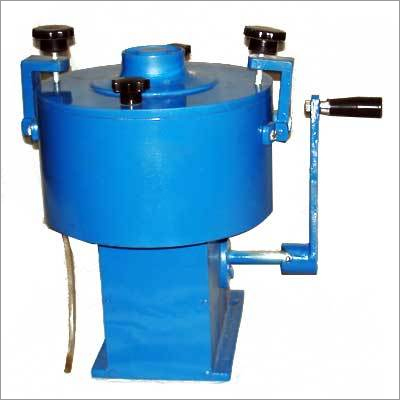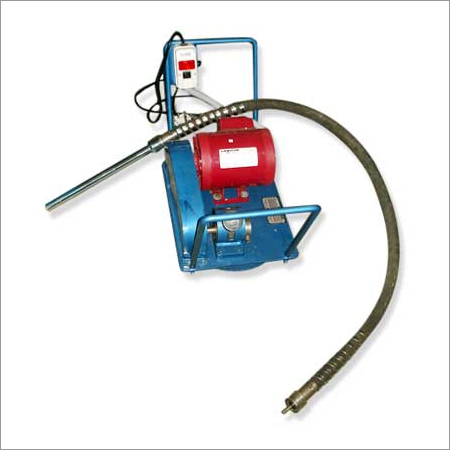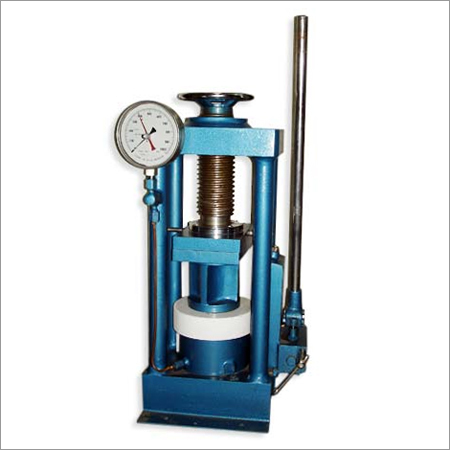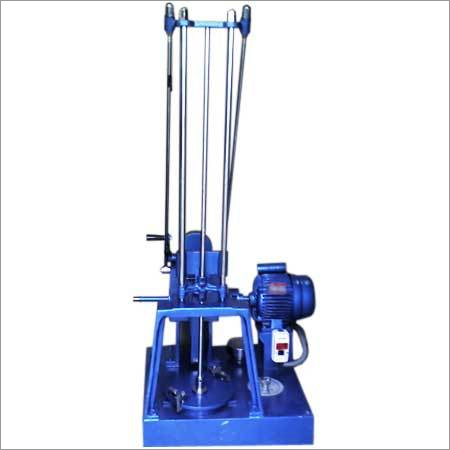Concrete Testing Equipment
Concrete Testing Equipment Specification
- Surface Treatment
- Powder Coated Finish
- Operating Pressure
- Up to 2000 kN
- Control System
- Hydraulic with Pressure Gauge
- Accuracy
- 1%
- Machine Type
- Concrete Compression Testing Machine
- Features
- Durable construction, Easy to operate, High Precision
- Power Source
- Electric
- Accessories Type
- Standard Platens, Spacers, Pressure Gauge
- Type
- Testing Equipment
- Material
- Mild Steel and Cast Iron
- Function
- Determining compressive strength and other concrete parameters
- Application
- Construction, Civil Engineering Laboratories, Quality Control
- Voltage
- 220V / 50Hz
Concrete Testing Equipment Trade Information
- Minimum Order Quantity
- 1 Number
- Supply Ability
- 04 Per Month
- Delivery Time
- 3-8 Week
About Concrete Testing Equipment
Concrete Testing Equipment
Ever since the inception of our company, we are presenting a wide assortment of Concrete Testing Equipment which is appreciated by our clients for durability, rugged design and study construction. These equipments are designed using optimum grade materials at our state of the art machining facility and advance technology. Ideal for making innovations in the field of civil engineering, our Concrete Testing Equipment is used in the research institutions as well as laboratories. Some of our equipments includes concrete permeability apparatus, curing tank, vibrating table , vibrating machine, compression testing machine and needle vibrator.
High Precision & Compliance
Each machine guarantees reliable compressive strength measurements, conforming to leading global standards such as IS, BS, and ASTM. With capacity ranges up to 2000 kN and a robust hydraulic system, this equipment ensures precise, repeatable results with every test. The integrated safety features provide operational confidence in demanding lab and site environments.
Engineered for Longevity
The use of rigid welded steel frames, powder-coated surfaces, and state-of-the-art components ensures enduring performance. Designed for frequent use in harsh laboratory or construction environments, this machine maintains its structural integrity and measurement accuracy, while standard safety mechanisms protect both operators and samples.
User-Friendly Operation & Versatility
Operators benefit from straightforward hydraulic controls, accessible emergency stop, and easy-to-read pressure gauges. With digital and manual options available, and platen sizes suited for various sample types, these machines serve the diverse needs of civil labs, construction sites, and materials testing specialists.
FAQs of Concrete Testing Equipment:
Q: How does the Concrete Testing Equipment determine the compressive strength of concrete?
A: The equipment applies controlled hydraulic pressure on concrete specimens using standard platens, measuring the force required to break them. This force is displayed via a pressure gauge (manual) or a digital interface, allowing accurate determination of compressive strength as specified by testing standards.Q: What are the main benefits of using this concrete compression testing machine in a construction or laboratory setting?
A: The machine provides high precision (1%), compliant with IS, BS, and ASTM standards, ensuring that results are reliable for quality control and research. Durability, user-friendly operation, overload and emergency stop safety features, and strong frame construction offer long-term usability and peace of mind.Q: When and where should this testing equipment be used?
A: Use this equipment during the quality control phase of construction or civil engineering projects, typically in laboratories, on-site testing areas, or research institutes. It is suitable for ambient operating temperatures ranging from 5C to 45C.Q: What is the difference between digital and manual models available in this range?
A: Digital models feature electronic data readouts and storage capabilities, offering enhanced measurement precision and record-keeping, while manual models use pressure gauges for direct readings. Both types maintain standard accuracy and safety features.Q: How does the machine ensure operator safety during testing?
A: Safety is achieved through built-in overload protection, an emergency stop button, and a rigid welded frame designed to withstand high pressures. These features minimize risks to users and uphold equipment integrity during rigorous testing.Q: What accessories come standard with the concrete testing machine?
A: Each unit includes standard platens (165 mm x 165 mm), spacers, and a calibrated pressure gauge. Additional accessories or customizations can be provided based on project requirements.Q: How does the construction and surface treatment enhance durability?
A: The machines rigid mild steel and cast iron frame is powder coated, offering resistance to corrosion, wear, and the stresses of frequent use. This ensures a long lifespan and consistent performance even in challenging environments.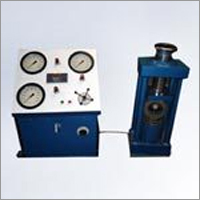

Price:
- 50
- 100
- 200
- 250
- 500
- 1000+
More Products in Civil Engineering Instruments Category
Bitumen Extractor
Price Range 10000.00 - 600000.00 INR / Number
Minimum Order Quantity : 1 Number
Function : Extraction of Bitumen from Asphalt Mix
Power Source : Manual
Features : Sturdy Construction, Corrosion Resistant, Easy Operation
Accessories Type : Centrifuge Basket, Filter Paper, Jug
Needle Vibrator
Price Range 10000.00 - 600000.00 INR / Number
Minimum Order Quantity : 1 Number
Function : Concrete Compaction
Power Source : Electric Motor
Features : Lightweight, Portable, Ergonomic Handle, Durable Construction, Easy Maintenance
Accessories Type : Flexible Shaft, Needle, Motor Unit
Compression Testing Machine
Price Range 10000.00 - 600000.00 INR / Number
Minimum Order Quantity : 1 Number
Function : Compressive Strength Testing
Power Source : Electric
Features : Rugged construction, precision loading, easy operation, safety features
Accessories Type : Pressure Gauge, Platen, Hand Wheel
Automatic Compactor
Price Range 10000.00 - 600000.00 INR / Number
Minimum Order Quantity : 1 Number
Function : Compacts Soil Samples Automatically
Power Source : Electric
Features : Digital LCD Display, Programmable Cycles, Safety Interlock, Low Noise Operation
Accessories Type : Sample Moulds, Rammer, Base Plate
Factory Address :
Plot No 47, Emerald Indl Estate, Kidc Indl Area, Deku Village, Khalapur Taluk,
Khopoli Raigad, Maharahtra

 Send Inquiry
Send Inquiry
